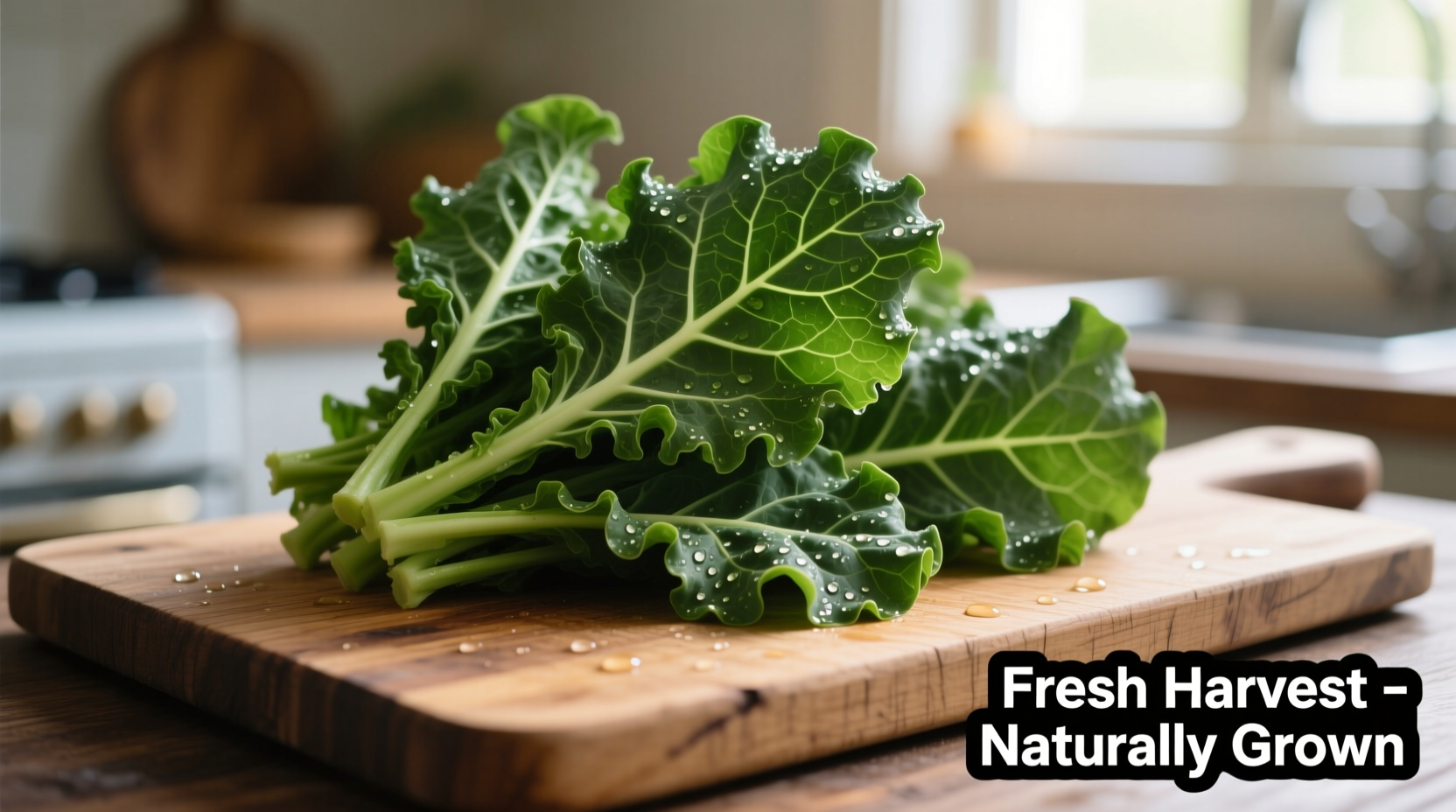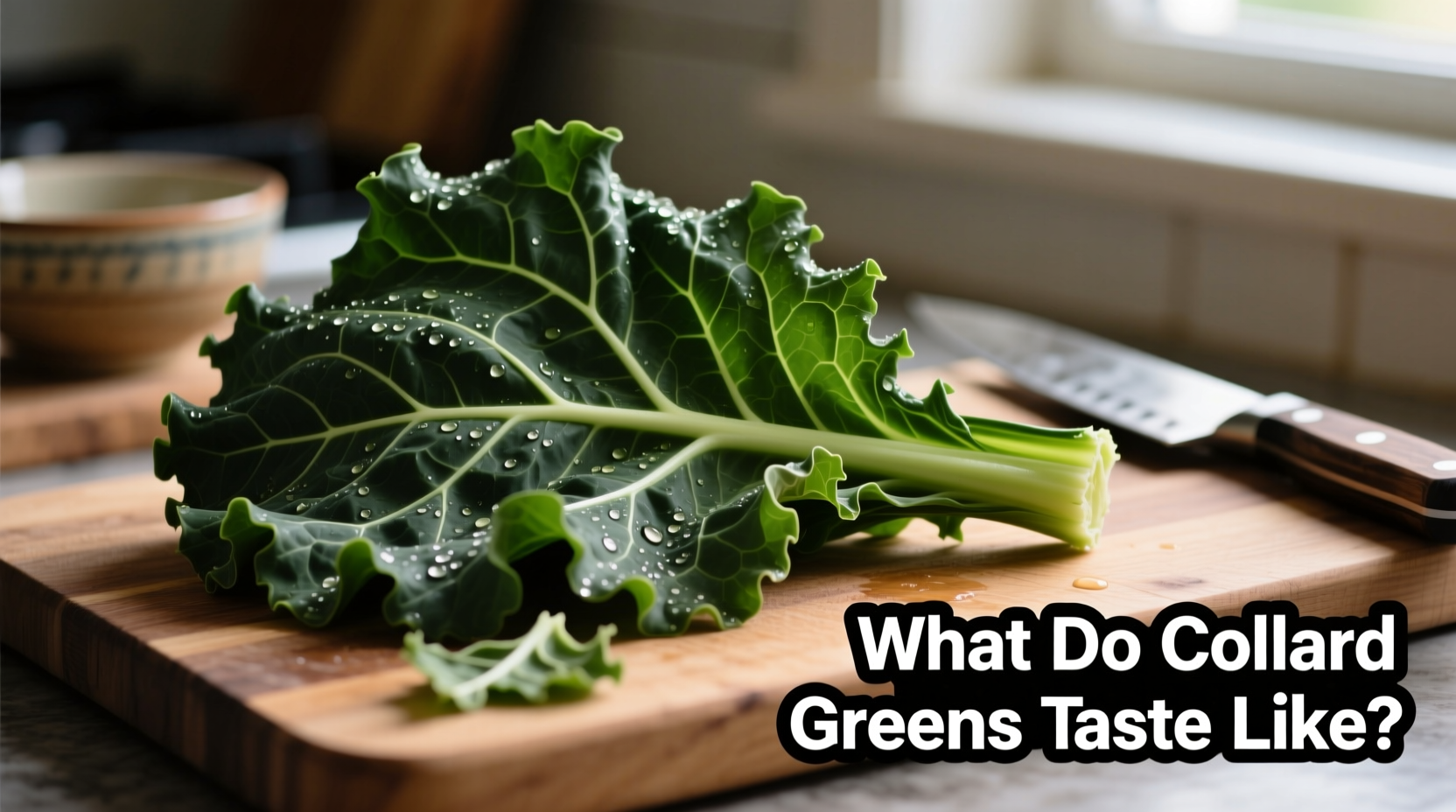Ever wondered what collard greens taste like before trying them? You're not alone. As this nutrient-packed Southern staple gains popularity nationwide, more home cooks want to understand its distinctive flavor before adding it to their shopping cart. In this guide, you'll discover exactly what to expect from collard greens' taste profile, how cooking transforms their flavor, and practical tips to make them delicious regardless of your cooking experience.
The Essential Flavor Profile of Collard Greens
When raw, collard greens deliver a robust, earthy flavor with noticeable bitterness—similar to kale but less intense than mustard greens. Their thick, sturdy leaves contain natural compounds called glucosinolates that create that characteristic bitter note. But don't let the bitterness scare you off; this quality actually makes collard greens incredibly versatile in the kitchen.
Unlike more delicate greens like spinach, collards maintain their structure during cooking, allowing their flavor to evolve rather than disappear. When properly prepared, they develop a complex flavor profile with:
- Earthy, almost mineral-like base notes
- Mild bitterness that balances other flavors
- Subtle natural sweetness that emerges with cooking
- Peppery undertones when eaten raw

How Collard Greens Compare to Other Leafy Greens
Understanding how collard greens taste requires comparison to other common leafy vegetables. This flavor comparison chart from USDA agricultural research shows how collards fit within the brassica family:
| Leafy Green | Bitterness Level | Earthy Notes | Sweetness Potential | Peppery Quality |
|---|---|---|---|---|
| Collard Greens | Moderate | Strong | High (when cooked) | Mild |
| Kale | High | Moderate | Moderate | Strong |
| Mustard Greens | Very High | Moderate | Low | Very Strong |
| Spinach | Low | Mild | High | None |
| Swiss Chard | Moderate | Mild | Very High | None |
This comparison reveals why collard greens occupy a unique middle ground—they're more approachable than intensely bitter greens but offer more complexity than mild greens like spinach.
What Actually Happens to Flavor During Cooking
The transformation of collard greens' taste during cooking isn't just culinary magic—it's science. According to research from North Carolina State University's agricultural extension program, prolonged cooking breaks down the tough cellulose structure while simultaneously reducing bitterness compounds. The university's food science department notes that "simmering collard greens for 45-90 minutes significantly decreases perceived bitterness while enhancing natural sweetness through the Maillard reaction."
Traditional Southern preparation methods often include ingredients that specifically counteract bitterness:
- Smoked meats (ham hock, turkey necks) add savory umami that balances bitterness
- Vinegar or lemon juice added at the end brightens flavors and cuts through earthiness
- Onion and garlic create aromatic complexity that complements the greens' earthiness
- Salt during cooking helps draw out bitter compounds
Practical Flavor Management Techniques
Whether you're new to collard greens or looking to refine your preparation, these evidence-based techniques will help you manage their distinctive flavor:
Reducing Bitterness Without Sacrificing Nutrition
Many home cooks make the mistake of overcooking collard greens to eliminate bitterness, but this approach sacrifices valuable nutrients. The USDA's Food Safety and Inspection Service recommends a balanced approach:
- Dry sauté first: Briefly cook chopped greens in a dry pan to reduce raw bitterness before adding liquid
- Add acid late: Incorporate vinegar or citrus in the last 15 minutes of cooking to preserve brightness
- Use the two-pot method: Boil greens briefly in one pot, then transfer to a second pot with flavoring ingredients
- Try the cold water shock: After cooking, plunge greens into ice water to stop the cooking process and preserve texture
Vegan Flavor Enhancement Strategies
You don't need animal products to create delicious collard greens. Modern culinary research shows that smoked paprika, liquid aminos, and mushrooms can provide similar umami depth. The James Beard Foundation's plant-based cooking guide recommends:
- Adding a strip of kombu seaweed during cooking for natural glutamates
- Using roasted garlic instead of raw for deeper flavor without sharpness
- Incorporating a small amount of miso paste near the end of cooking
- Finishing with toasted sesame oil for nutty complexity
When Flavor Goes Wrong: Troubleshooting Common Issues
Sometimes collard greens don't taste quite right. Understanding these common flavor problems can help you adjust your technique:
- Excessively bitter: Likely undercooked or from older plants. Try adding a small amount of baking soda (1/8 teaspoon) to the cooking water, which neutralizes bitterness without significant nutrient loss according to University of Georgia food science research.
- No discernible flavor: Possibly overcooked or from poor-quality greens. Next time, try reducing cooking time and adding flavoring ingredients earlier in the process.
- Sour or off taste: Could indicate spoilage. Fresh collard greens should never taste sour—discard if you detect this flavor.
Seasonal Flavor Variations You Should Know
Collard greens' taste changes throughout the year, which many home cooks don't realize. Research from the Cooperative Extension System shows that collards harvested after the first frost develop noticeably sweeter flavors as the plant converts starches to sugars for winter survival. This seasonal variation explains why many Southern chefs consider winter-harvested collards superior in flavor.
When shopping for collard greens, look for:
- Deep green color without yellowing
- Firm, crisp leaves that spring back when touched
- Stems that snap cleanly rather than bend
- Smaller leaves for milder flavor (larger leaves tend to be more bitter)
Putting It All Together: Creating Balanced Flavor
The key to enjoying collard greens lies in understanding their flavor journey. Start with fresh, high-quality greens, then use cooking techniques that transform rather than mask their natural characteristics. Whether you're preparing them Southern-style with smoked turkey or creating a modern vegan version, the goal is balance—allowing the earthy depth of collards to shine while managing bitterness through thoughtful preparation.
Remember that personal preference plays a role—some people enjoy a more pronounced bitterness, while others prefer milder results. The beauty of collard greens is their adaptability to your taste preferences through simple adjustments to cooking time and ingredient combinations.











 浙公网安备
33010002000092号
浙公网安备
33010002000092号 浙B2-20120091-4
浙B2-20120091-4